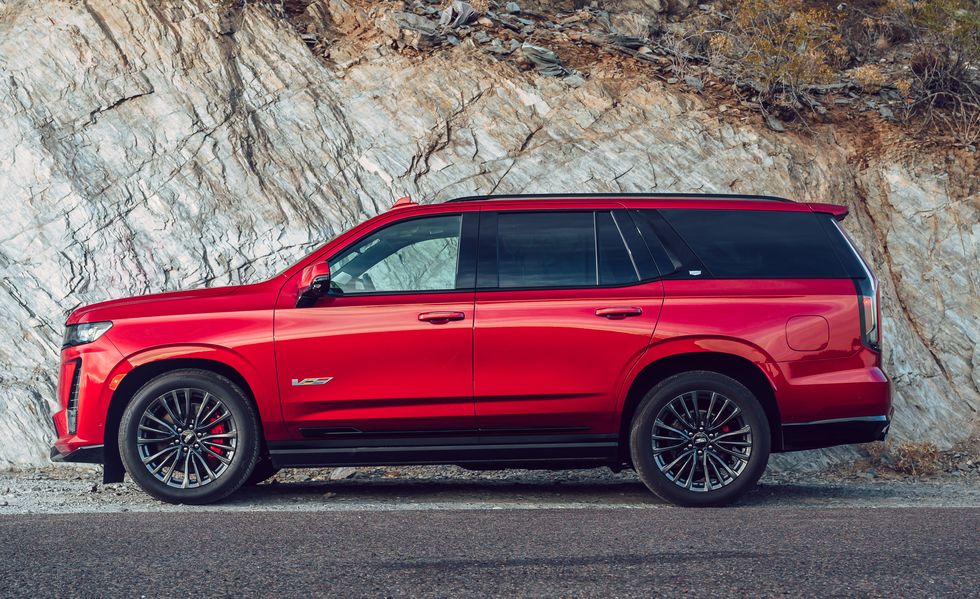From the February/March issue of Car and Driver.
All of us, from the moment we grasp the key to our first car, face a decision: to tune or not to tune. Are you content with what the manufacturer hath wrought? Or do you suffer the hubris of believing that you, an individual owner, could effect some notable improvements? Of course you do. All of us think that. And often enough, we suffer the consequences.
I pondered this when driving
the Cadillac Escalade-V. Because I have a weakness for ill-advised shortcuts, I wondered if you could just bolt a supercharger to a 6.2-liter Escalade and get nearly the same result without spending $152,590. So I asked some GM engineers. If you want to skip the next two paragraphs, the short answer was no.
The V’s exhaust system alone is a complex piece of engineering. “It’s true dual exhaust,” says Howard Smith, GM performance variant manager. “But the driver’s-side pipe would normally be about a foot and a half longer than the one on the passenger’s side. So we had to put a 360-degree loop in the passenger’s-side pipe to equalize the lengths and get the sound we wanted.” That’s right, the Escalade-V exhaust includes a French horn, purely so it’ll sound awesome. “Did you try standing behind it and doing a remote start?” asks Charlie Allen, engine design system manager. I can feel his disappointment radiating across state lines when I admit that I didn’t.
The V also gets a beefier transfer-case front-output bearing and stronger front half-shafts. The rear air springs are new, to help keep the front end down when you’re deploying launch control. Brembo six-piston calipers are fitted in front, and the lower grille is different, to increase airflow to the extra heat exchanger necessitated by the supercharger. That supercharger itself is upsized to facilitate massive low-rpm torque. And there’s a ton of calibration required for the new hardware. The result is a giant SUV that hits 60 mph in 4.3 seconds but feigns normalcy when you’re not doing that.
All of this points to the main challenge for tuners: amping up capability without compromising the car. For instance, my friend Tim installed Braum race seats in his 475-hp Kia Stinger, and they save weight and look cool. But unlike the stock seats, they’re not heated or cooled or 16-way power adjust-able. Another friend, also named Tim, modified his C6 Corvette for drag racing and swapped in a four-speed automatic transmission, to the detriment of daily-driving refinement. Yet another friend named Tim drives a Toyota 4Runner that—you’ll never believe this—is completely stock. Get with the program, Third Tim!
For my part, both of our household vehicles are lamentably, and lamely, unmodified. But my Monkey is a beast.
Which is to say, I made a series of upgrades on my 2019 Honda Monkey motorcycle. The Monkey’s DH Motoring Stage 3 kit (a high-compression piston, a hot cam, and an ECU flash) costs $285. Along with an aftermarket intake and exhaust, that gear takes the Monkey from a meager 8.3 horsepower at the wheel to a thundering herd of 13.7 ponies, according to the company. But there are trade-offs. The new cam doesn’t have a decompression lobe, so the starter motor has to fight to fire the engine. The exhaust is loud enough to require earplugs inside my helmet. And now I have to run premium fuel. I improved the Monkey in many ways, but I also sort of ruined it.
Therein lies the appeal of a factory tuner vehicle like the Escalade-V. You get all the advantages in performance without sacrificing drivability or comfort or your warranty. The only thing the factory ruined is the price.

